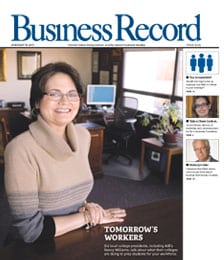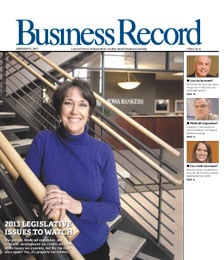U.S. economy reaping what the banks have sown

.floatimg-left-hort { float:left; } .floatimg-left-caption-hort { float:left; margin-bottom:10px; width:300px; margin-right:10px; clear:left;} .floatimg-left-vert { float:left; margin-top:10px; margin-right:15px; width:200px;} .floatimg-left-caption-vert { float:left; margin-right:10px; margin-bottom:10px; font-size: 12px; width:200px;} .floatimg-right-hort { float:right; margin-top:10px; margin-left:10px; margin-bottom:10px; width: 300px;} .floatimg-right-caption-hort { float:left; margin-right:10px; margin-bottom:10px; width: 300px; font-size: 12px; } .floatimg-right-vert { float:right; margin-top:10px; margin-left:10px; margin-bottom:10px; width: 200px;} .floatimg-right-caption-vert { float:left; margin-right:10px; margin-bottom:10px; width: 200px; font-size: 12px; } .floatimgright-sidebar { float:right; margin-top:10px; margin-left:10px; margin-bottom:10px; width: 200px; border-top-style: double; border-top-color: black; border-bottom-style: double; border-bottom-color: black;} .floatimgright-sidebar p { line-height: 115%; text-indent: 10px; } .floatimgright-sidebar h4 { font-variant:small-caps; } .pullquote { float:right; margin-top:10px; margin-left:10px; margin-bottom:10px; width: 150px; background: url(http://www.dmbusinessdaily.com/DAILY/editorial/extras/closequote.gif) no-repeat bottom right !important ; line-height: 150%; font-size: 125%; border-top: 1px solid; border-bottom: 1px solid;} .floatvidleft { float:left; margin-bottom:10px; width:325px; margin-right:10px; clear:left;} .floatvidright { float:right; margin-bottom:10px; width:325px; margin-right:10px; clear:left;}
Dear Mr. Berko:
Can you explain to me in simple English how this banking crisis happened? I believed that U.S. banks were the strongest in the world, and now they seem to be collapsing while banks in Europe and Asia remain healthy. My brother, who lives and works in the Netherlands, says U.S. banks have “sloppy management and lending practices,” which is why they are in trouble. I’d like your thoughts.
R.D.: Harrisburg, Pa.
Dear R.D.:
Your brother is right as blue skies and sunshine. But he neglected to tell you that the U.S. consumer is the dumbest and most gullible in the industrialized world. I think the only reason most Americans don’t own a camel is that corporate America has yet to figure out how to finance one for $100 down with payments of $25 a month and then securitize the loan.
Read on:
Imagine that it’s March 2001 and you have found your dream home for $150,000 but only have $3,000 for a down payment. The builder-seller, bank, real estate agent and mortgage broker are hungry. So the real estate agent writes a “soft” contract, the mortgage broker completes your loan application, the builder-seller gives bonuses under the hat and, poof, you are on your way to the American Dream. It was sop from coast to coast, and some folks were buying homes with no money down and no principal or interest payments for 18 months.
Everybody was as happy as hogs in slop. The builders, the banks, the mortgage brokers and the real estate professionals all were in high cotton. Moody’s Investors Services and Standard & Poor’s were passing out AAA bond ratings like candy samples while Wall Street made billions securitizing these mortgages and then peddling them to pension plans in Europe and the United States. Meanwhile, Federal Reserve Board Chairman Alan Greenspan continued to pour money into the economy and credit flowed like beer at a college frat party.
What a party it was.
Then a few years later, when the value of your home vaulted to $200,000, Bank of America Corp., Citigroup Inc., Wachovia Corp., Fifth Third Bancorp, etc. began spending hundreds of millions of advertising dollars to persuade millions of Americans to borrow hundreds of billions of dollars. Clever advertisements on television, radio, billboards, newspapers and magazines told consumers to be happy, to borrow against the increased market value of their homes and buy home entertainment centers, all-terrain vehicles, big-screen TVs, Hummers, body amplifications, electronic games and toys, designer clothing and exotic vacation packages.
The banks, figuratively and literally, blanketed the media with Madison Avenue hype and snippets of happy families enjoying their new toys with an implied message: “So why not you, too?” The ads were everywhere: taxis, buses, subway stations, restrooms, opium dens and dentist offices. They shouted, “Buy and borrow,” and, “Give me, get me and show me yours.” So Americans took out $30,000 or $40,000 home-equity loans, the banks were bellybutton-deep in profits, consumer spending sizzled, corporate earnings rocketed, the stock market exploded and Bear Stearns considered buying its own country.
It was a wondrous three-ring circus: the tawdry tinkle of the hurdy-gurdy with monkeys on chains, the trumpet fanfare of a Fellini movie, dancing clowns with freaks and trapeze artists joining hands and capering across new pool decks. There was no accountability; some banks were making mortgage loans through their drive-up windows, offering free magnetic-resonance images, Botox injections and weekends at nudist colonies to consumers who signed papers for home-equity loans.
Then it happened. It happened quietly on Jan. 7, 2007, in Phoenix, or Feb. 3 in Miami, or March 18 in Las Vegas. For the first time in nine years, a home was sold for less than its previous purchase price.
The Mortgage Brokers Association, the banking industry and the National Association of Realtors rushed to put the kibosh on the news. But there was no denying it: The Great Home Owners Rush of the Millennium was officially kaput.
The banks were not hurt right away; they still had enough equity protection on your $30,000 and $40,000 home-equity loans. But within a year, the market values of homes owned by Jack Daniels, Sara Lee, Sherwin Williams, Virginia Dare and Oscar Mayer lost the equity appreciation that allowed Citigroup and Wachovia to make $40,000 home-equity loans. In effect, those banks were holding promissory notes with bupkis for collateral, something strictly forbidden by the banking industry’s 11th commandment.
So hundreds of billions of dollars of bank assets — i.e., home-equity mortgages — disappeared into the vapors and ether. Because those loans had zero assets guaranteeing their principal and couldn’t be securitized — that is, packaged for sale — Citigroup, Wachovia and the rest had to raise billions of new capital to bring their balance sheets into compliance with federal regulations or face panic capital withdrawals by depositors.
By the time the banks realized what had happened, the market values of Virginia’s and Sherwin’s homes had fallen well below their first, or original, mortgage balance. There’s an old saying: “If you owe the bank $1 million, you’re in trouble, but if you owe the bank $100 million, the bank is in trouble.”
Taking that a step further: If America owes the banks hundreds of billions, then the banking system is in trouble. But when that number reaches $1 trillion, well, the whole U.S. economy is in trouble.
Please address your financial questions to Malcolm Berko, P.O. Box 1416, Boca Raton, Fla. 33429 or e-mail him at malber@comcast.net. © 2008 Creators Syndicate, Inc.







